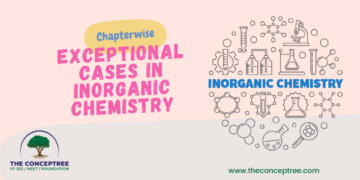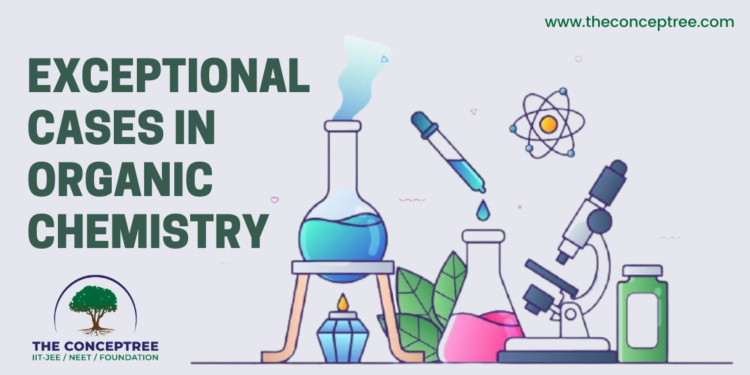Ag+, Hg2+, Pt2+ act as an electrophile but Na+ is not.
Metal ios that contain vacant orbitals of lower energy Ag+, Hg2+ and Pt2+ act as an electrophile. Sodium ion is not electrophilic as it lacks empty orbital of lower energy.
Alkyl halides are prepared from alcohols but not aromatic halides
![]()
The above method is not applicable for the preparation of aryl halides because the carbon-oxygen bond in phenols has a partial double bond character and is difficult to break being stronger than a single bond.
The dipole moment of C-Cl bond is more than C-F.
Dipole moment depends on the difference in electronegativity of carbon and halogens and as we know that the electronegativity of halogens decreases down the group, the dipole moment also decreases. There is an exception of C-Cl and C-F dipole moments. Though the electronegativity of Cl is less than F, but the dipole moment of C-Cl bond is more than C-F.
Dipole moment is the product of the magnitude of charge accumulated on bond and the distance between the poles. Thus dipole moment of alkyl halide depend on not only the polarity of the bond but also on the bond length. Bond length of C-Cl bond is greater than C-F bond. As a cumulative result of polarity and bond length, dipole moment of C-Cl bond is more than C-F.
Separation of ortho and para isomers
The ortho and para isomers can be easily separated due to large difference in their melting points.
Preparation of aryl halides (exception : aryl iodides)
Aryl chlorides and bromides can be easily prepared by electrophilic substitution of arenes with chlorine and bromine respectively in the presence of Lewis acid catalysts like iron or iron(III) chloride. Reactions with iodine are reversible in nature and require the presence of an oxidising agent (HNO3, HIO4) to oxidise the HI formed during iodination. Fluoro compounds are not prepared by this method due to high reactivity of fluorine.
Preparation of alkyl iodides
Alkyl iodides are often prepared by the reaction of alkyl chlorides/ bromides with NaI in dry acetone. This reaction is known as Finkelstein reaction. NaCl or NaBr thus formed is precipitated in dry acetone. It facilitates the forward reaction according to Le Chatelier’s Principle.
Preparation of alkyl Fluorides
The synthesis of alkyl fluorides is best accomplished by heating an alkyl chloride/bromide in the presence of a metallic fluoride such as AgF, Hg2F2, CoF2 or SbF3. The reaction is termed as Swarts reaction.
The boiling points of isomeric haloalkanes decrease with increase in branching .
2-bromo-2-methylpropane has the lowest boiling point among the three isomers
 The Zaitsev Rule
The Zaitsev Rule
“In dehydrohalogenation reactions, the preferred product is that alkene which has the greater number of alkyl groups attached to the doubly bonded carbon atoms.”

 Bond angle in ether is higher than that of methanol and phenol
Bond angle in ether is higher than that of methanol and phenol
The bond angle in alcohols is slightly less than the tetrahedral angle (109o -28’ ). It is due to the repulsion between the unshared electron pairs of oxygen. In phenols, the –OH group is attached to sp2 hybridised carbon of an aromatic ring. The carbon– oxygen bond length (136 pm) in phenol is slightly less than that in methanol. This is due to (i) partial double bond character on account of the conjugation of unshared electron pair of oxygen with the aromatic ring and (ii) sp2 hybridised state of carbon to which oxygen is attached.
In ethers, the four electron pairs, i.e., the two bond pairs and two lone pairs of electrons on oxygen are arranged approximately in a tetrahedral arrangement. The bond angle is slightly greater than the tetrahedral angle due to the repulsive interaction between the two bulky (–R) groups. The C–O bond length (141 pm) is almost the same as in alcohols.
 Boiling point of aldehydes, ketones and carboxylic acids
Boiling point of aldehydes, ketones and carboxylic acids
Carboxylic acids are higher boiling liquids than aldehydes, ketones and even alcohols of comparable molecular masses.
Acidity
Carboxylic acids are considerably more acidic than alcohols and most of simple phenols. pKa is ~16 for ethanol and 10 for phenol)
Carboxylic acids are weaker than mineral acids.
Acidity of carboxylic acids
- Electron withdrawing substituent near the COOH group increases the acidity of the carboxylic acid (Due to -I Effect)
| Acid | Pka Value |
| CH3COOH | 4.76 |
| ICH2COOH | 3.18 |
| BrCH2COOH | 2.90 |
| ClCH2COOH | 2.86 |
| FCH2COOH | 2.59 |
- Multiple substitution increases the acidity further.
- The inductive effect of halogen substation falls off rapidly with distance from carboxylic group ,electron releasing substituents intensify the negative charge to destabilize the anion and thus decrease the acidity
. p-hydroxy benzoic acid less acidic to C6H5COOH but o-hydroxy salicylic acid more than benzoic acid.
Presence of -OH group (electron withdrawing) on benzoic acid decreases the acidic nature because negative charge on carboxylate ion decrease thereby making carboxylate ion less stable. The resonance effect being stronger as compared to inductive effect, there is net increase in electron density at o-and p- positions, p-hydroxy benzoic acid is, therefore, less acidic than benzoic acid. However, in o-hydroxy benzoic acid, there is intermolecular hydrogen bonding which stabilizes o-hydroxy benzoate ion (conjugated base) to greater extent and thereby increasing acidic nature.
Similiarity between carboxylic acid and alcohol
Carboxylic acids like alcohols evolve hydrogen with electropositive metals and form salts with alkalies
Difference between carboxylic acid and phenol
Carboxylic acid react with weaker bases such as carbonates and hydrogencarbonates to evolve carbon dioxide
Basic nature of ammonia, aliphatic and aromatic amines
Aliphatic amines are stronger bases than ammonia due to +I effect of alkyl groups leading to high electron density on the nitrogen atom. Their pKb values lie in the range of 3 to 4.22. On the other hand, aromatic amines are weaker bases than ammonia due to the electron withdrawing nature of the aryl group.
Boiling point of primary, secondary and tertiary amines
Primary and secondary amines are engaged in intermolecular association due to hydrogen bonding between nitrogen of one and hydrogen of another molecule. This intermolecular association is more in primary amines than in secondary amines as there are two hydrogen atoms available for hydrogen bond formation in it. Tertiary amines do not have intermolecular association due to the absence of hydrogen atom available for hydrogen bond formation. Therefore, the order of
Boiling points of isomeric amines is as follows:
Primary > Secondary > Tertiary
Basicity of amines in Gaseous phase
The order of basicity of amines in the gaseous phase follows the expected order: tertiary amine > secondary amine > primary amine > NH3
Basicity of amines in Aqueous phase
In the aqueous phase, the substituted ammonium cations get stabilized not only by electron releasing effect of the alkyl group (+I) but also by solvation with water molecules. The greater the size of the ion, lesser will be the solvation and the less stabilised is the ion.
Greater is the stability of the substituted ammonium cation, stronger should be the corresponding amine as a base.
Thus, the order of basicity of aliphatic amines should be: primary > secondary > tertiary, which is opposite to the inductive effect based order.
Secondly, when the alkyl group is small, like –CH3 group, there is no steric hindrance to H-bonding. In case the alkyl group is bigger than CH3 group, there will be steric hinderance to H-bonding. Therefore, the change of nature of the alkyl group, e.g., from –CH3 to –C2H5 results in change of the order of basic strength. Thus, there is a subtle interplay of the inductive effect, solvation effect and steric hinderance of the alkyl group which decides the basic strength of alkyl amines in the aqueous state. The order of basic strength in case of methyl substituted amines and ethyl substituted amines in aqueous solution is as follows:
(C2H5)2NH > (C2H5)3N > C2H5NH2 > NH3
(CH3)2NH > CH3NH2 > (CH3)3N > NH3
Aniline does not undergo Friedel-Crafts reaction
Aniline does not undergo Friedel-Crafts reaction (alkylation and acetylation) due to salt formation with aluminium chloride, the Lewis acid, which is used as a catalyst. Due to this, nitrogen of aniline acquires positive charge and hence acts as a strong deactivating group for further reaction.






































